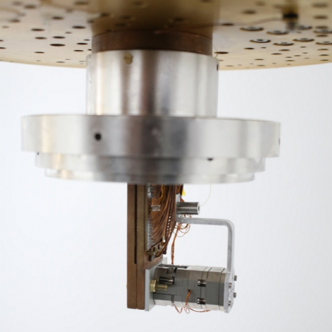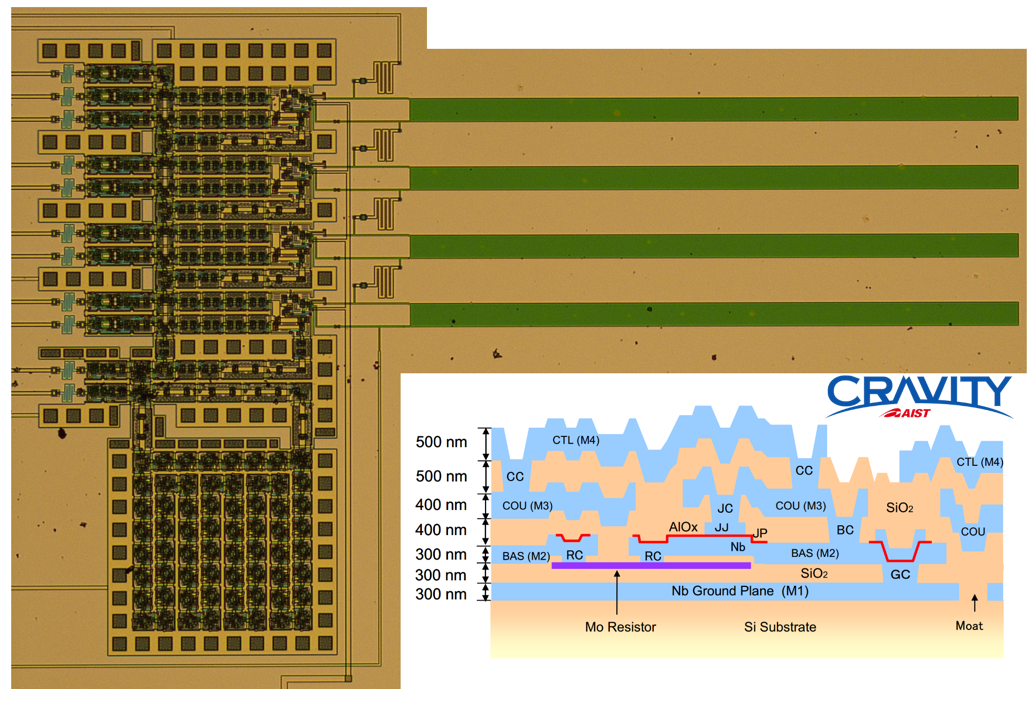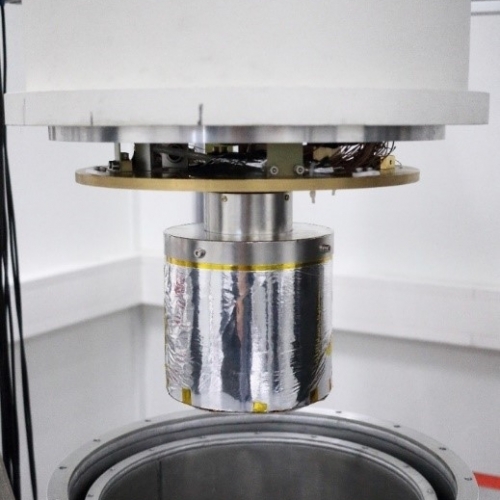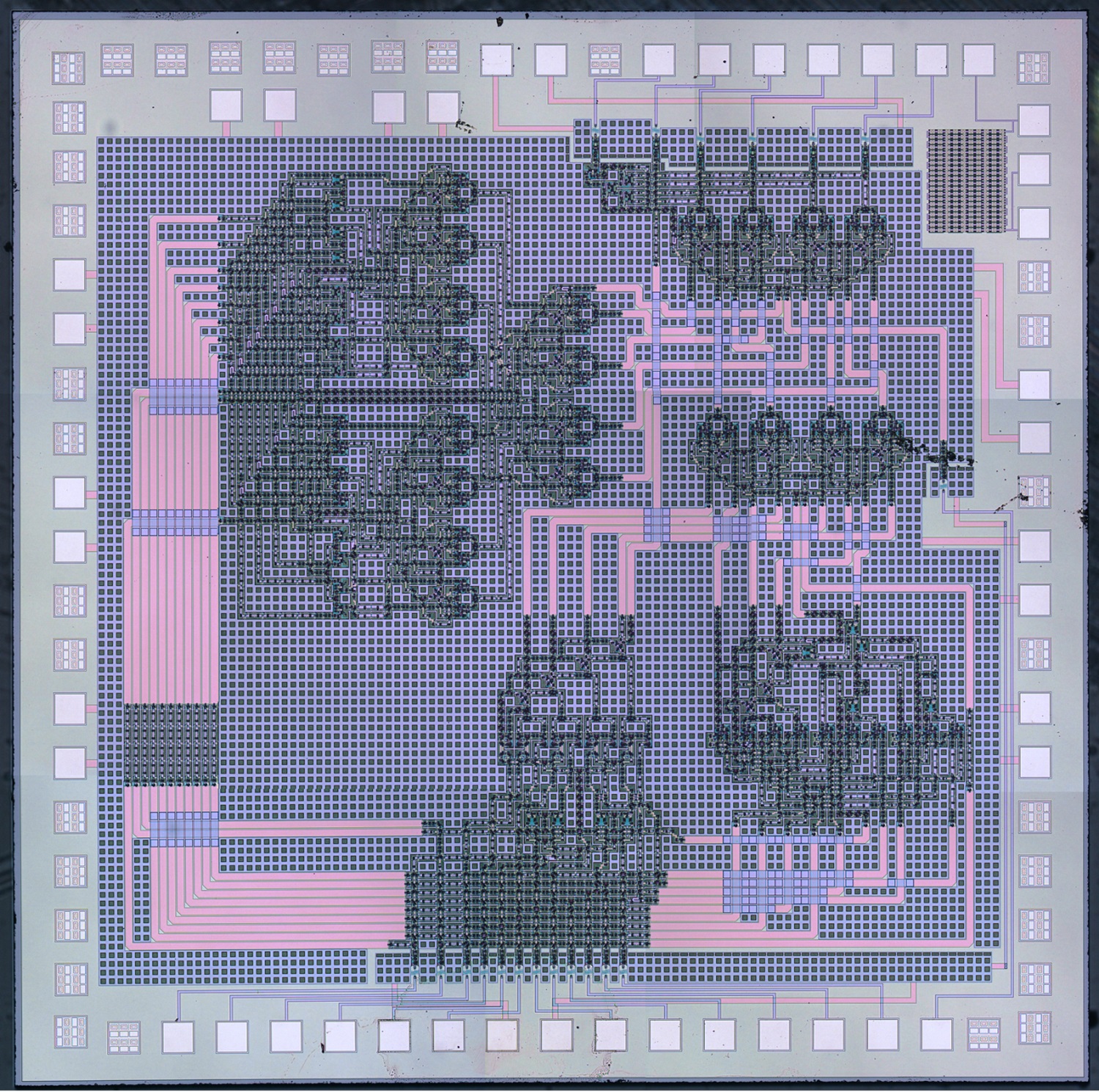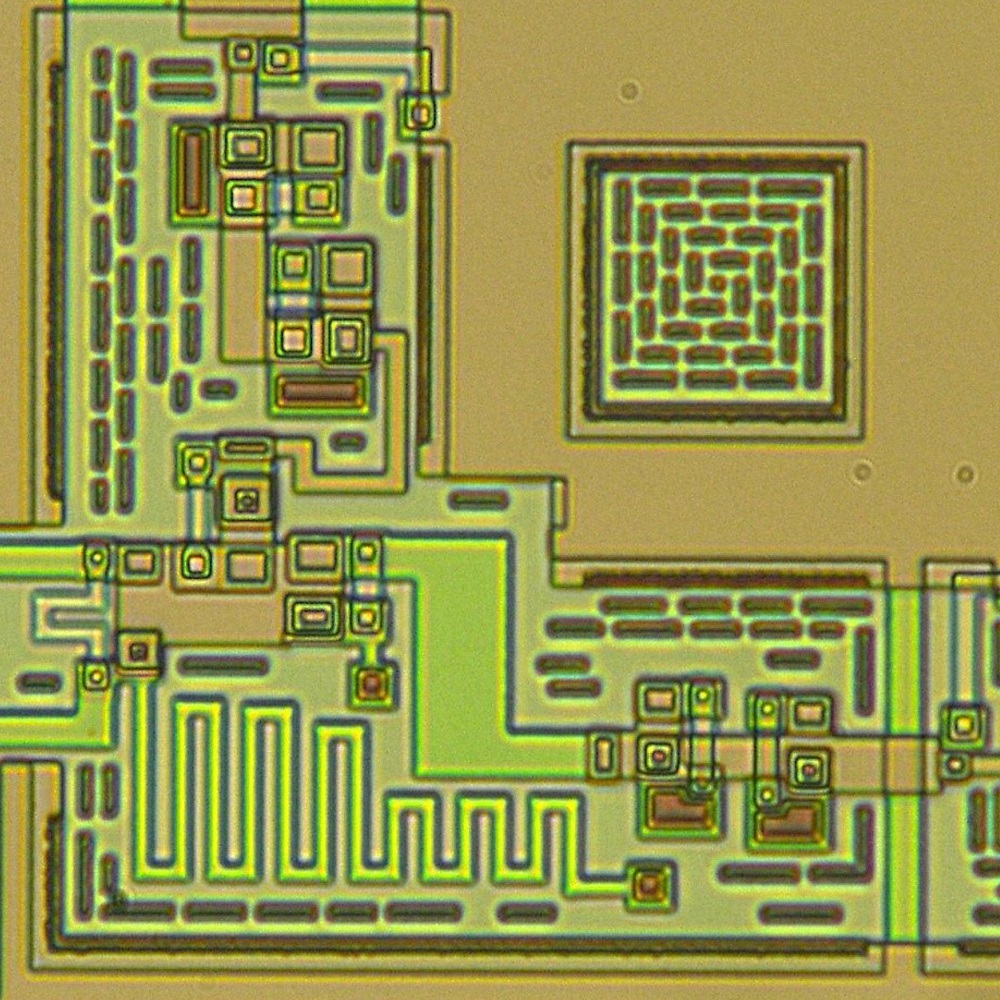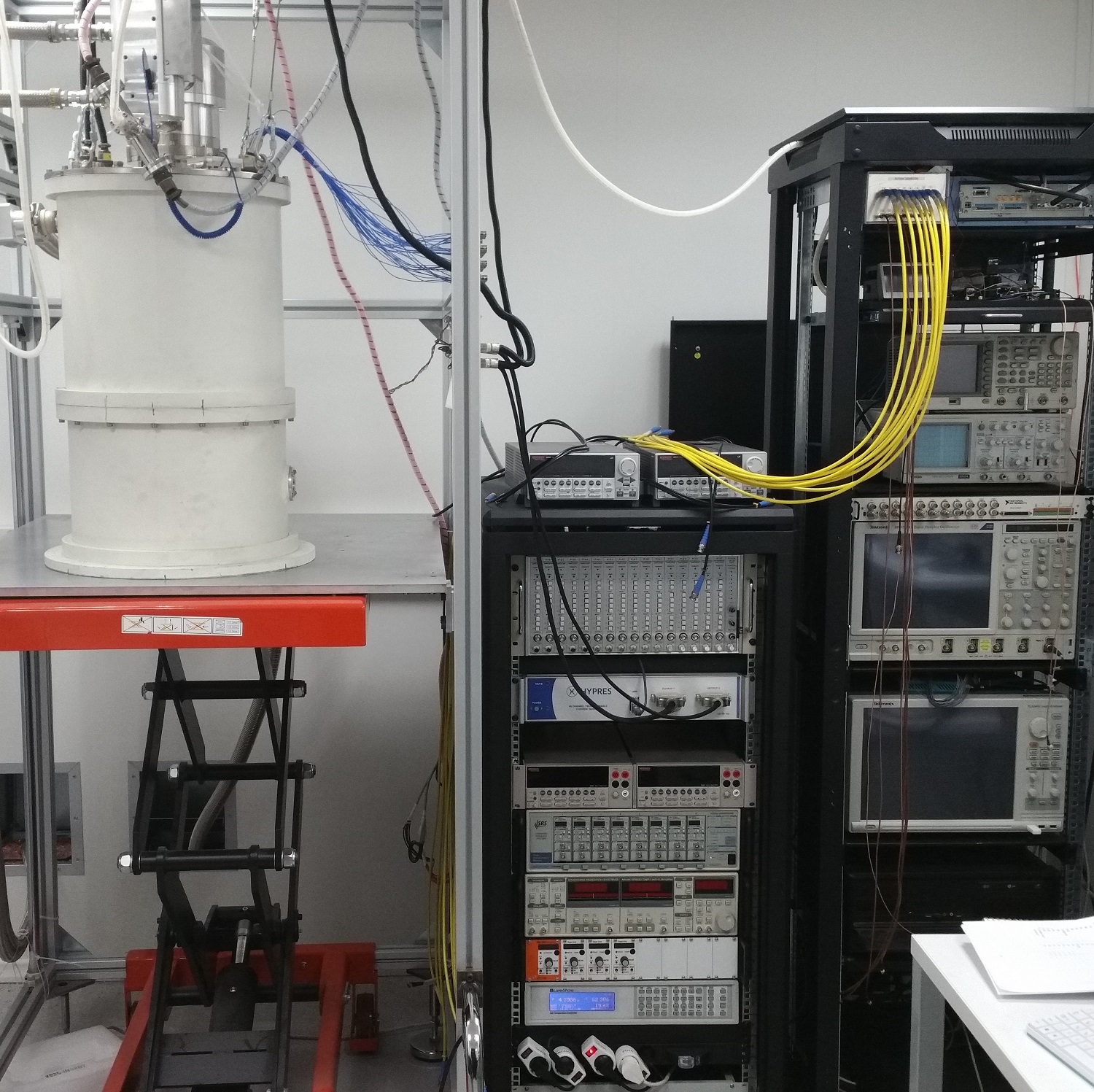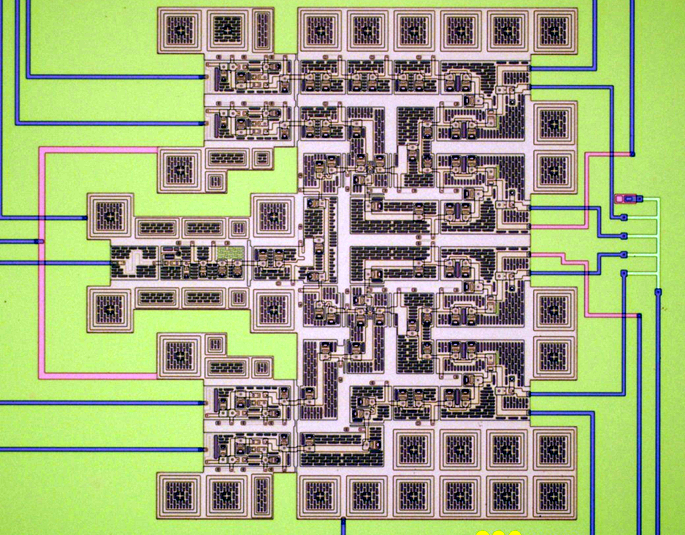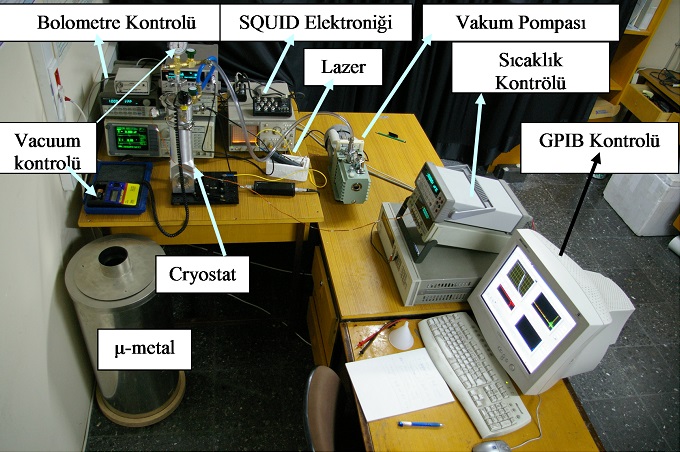Implementation of a monolithic digital SQUID by using standard foundry processes.
Principle Investigator: Ali Bozbey, TOBB ETU
Supported by: TUBITAK – ANR
Project Dates: 2018-2020
Ultrasensitive magnetometry is required in various applications and superconducting quantum interference devices (SQUIDs) are known as the most sensitive magnetic field sensors and are widely used in all fields requiring ultimate sensitivities such as solid-state physics, biomagnetism, medicine with magnetoencephalography and magnetocardiography, archeology, earthquake detection, subsoil sounding for hydrogeology and environmental purposes, nondestructive evaluation, radiation detector dead-out and even quantum bit read-out applications. So far, analog Superconducting Quantum Interference Devices (SQUIDs) have successfully met stringent requirements for such uses, with a sensitivity level today reaching less than 1fT/ÖHz for cm-sized sensors and a few tens of nΦ0/ÖHz for nanometer size. Here Φ0=h/2e is the quantum of magnetic flux. Depending on the target application, SQUIDs can work in a magnetic shielded environment or must operate in unshielded conditions.
Important parameters that characterize SQUID systems are their sensitivity and their magnetic flux to voltage transfer characteristics. The state-of-the-art magnetic field sensitivity is of the order of a few fT/ÖHz for low-Tc SQUIDs and below 40 fT/ÖHz for their high-Tc counterparts, corresponding roughly to flux sensitivities in the range of a few µF0/ÖHz for signals around the 1 Hz frequency range. The standard configuration is to operate the nonlinear SQUID in feedback mode with a flux-locked loop. When outdoor measurements need to be done, for instance, for archeology or geophysical applications, then magnetically unshielded devices are required. This puts a strong constraint on the dynamic range of the device, taken between the noise floor of the device and its maximum output amplitude level. The dynamic range can also be the maximum signal-to-noise ratio (SNR), measured in amplitude and not in power unit, that the sensor can achieve without distortion of the signal. Indeed, it has to detect fields in the femtotesla range while being moved in the earth’s magnetic field with an amplitude of around 50 µT. In this project, we aim to tackle these points and develop a fully monolithic digital SQUID without any room temperature processing electronics and increase the sensitivities of the digital SQUID to levels suitable for using in geophysical applications.
Development of a Multi-Module Main IC (M3I) Submodules for Superconducting Integrated Circuits
Principle Investigator: Ali Bozbey, TOBB ETU
Supported by: TUBITAK
Project Dates: 2018-2021
As the semiconductor industry continues to develop faster and more efficient processors on one hand, other alternative technologies continue to evolve. Superconducting material based rapid single-flux quantum-based circuits are also one of them. In the present case, design tools and fabrication technologies with standard processes have reached sufficient levels for the development of superconducting processors. However, one of the problems that have not yet been solved is memory, which can operate at very high speed and low power consumption at cryogenic temperatures. On this subject VTM, magnetic superconductors, spintronics devices and CMOS based memories are still under development on the subject. Although several hundreds of kB of memories are repotted in the literature has not been possible to meet the requirements of the processors suitable for using in actual systems.
Even more important problem is high speed and low power interface devices between the superconducting digital circuits and semiconductor systems. Unfortunately, still there is a need for complicated high-speed laboratory equipment. A solution in the form of high speed, low power and low-cost IP block has not been reported so far.
Within this project, we aim to develop the modules of a multi-module main IC (M3I) that can provide a “System-on-chip” solution for interfacing single flux quantum-based digital circuits with the outside world without any use of high-end laboratory equipment. We also aim to provide an alternative solution to the memory problem, which is one of the most important bottlenecks in the development of superconductor supercomputers.
It is considered that one of the suitable production technologies that can provide the targeted ASIC is SiGe technology and it is planned to demonstrate the operability of the system by carrying out the production as detailed in the literature and method parts.
Implementation of an earth magnetic field 7/24 recording station by using 3 axis ultrasensitive magnetometers for the research of earthquake precursors and earth modelling
Principle Investigator: Ali Bozbey, TOBB ETU
Supported by: TUBITAK – COST
Project Dates: 2018-2021
There are reports and preliminary data that show that there is some relationship between the seismic events and the fluctuations of the magnetic field of the Earth. There are more than 50 countries possessing stations to monitor these fluctuations, which are being researched to be used as earthquake precursors. The biggest obstacle for the success of this research is that current magnetic field measurement systems do not have sufficient sensitivity. Other important obstacles include a lack of registered data and the intrinsic complexity of underlying physical mechanisms. In addition, the magnetic field is also affected by plenty of phenomena and discrimination of their origin is not so easy. Nevertheless, the magnetic signatures of miscellaneous events already observed with [SQUID]2 magnetometer at the Low Noise LSBB laboratory are in favor of a more advanced set of magnetometers arranged in a network to better understand the origin and location of observed signatures.
In this project we plan to use Superconducting Quantum Interference Device – SQUID, to install one SQUID magnetic observation station in Turkey that can record with 1pT sensitivity and 500 Hz sampling frequency. Then to network the station to the already installed systems in France and South Africa. The first station is a Low Temperature Superconductor (LTS) SQUID device in the Low Background Noise Underground Laboratory (LSBB – Laboratoire Souterrain à Bas Bruit) shielded underground low noise environment in France, the second one is a High Temperature Superconductor set in a non-magnetic dedicated unshielded house located in Hermanus, South African National Space Agency. Eventually, with the interest of some groups in USA, Philippines, Japan, Argentina, and Bulgaria a network of stations can be distributed all around the world. Hence, it may be possible to extract meaningful and correlated information with the seismic events if the data from many stations are fused.
Besides, these developments will be useful for observations of other phenomena, like the ones connected to space weather or hydrogeology.
Implementation of a superconducting monolithic 10X10 imaging matrix using standart foundry processes developed for SFQ circuits
Principle Investigator: Ali Bozbey, TOBB ETU
Supported by: TUBITAK
Project Dates: 2014-2017
With the proposal and utilization of a new read-out scheme in 2002 for Kinetic Inductance Detectors, which was invented early 1990s, a number of groups especially working on the space research, showed interest and have started working on various detector configurations. As the SPACEKIDS group indicate “The Kinetic Inductance Detector (KID) is a new superconducting detector technology offering the promise of excellent sensitivity and ease of operation in space. Only a few simple metal deposition and patterning processing steps are needed in the manufacture, and many pixels can be read out simultaneously and very simply. These features make KID detectors very attractive for future space missions.”
When we investigate the detector read-out schemes utilized so far, we see that they are mainly SQUID based or resonator based. Especially resonator based techniques are favorable for KIDs due to the nature of the detector. However, as both techniques are analog, it is not practical to scale the detector integration beyond a few thousand pixels. As our proposal involves digital processing of signals, these disadvantages do not exist.
In this project, we aim to develop a kinetic inductance detector system with Single Flux Quantum (SFQ) based read-out electronics. This detector system will be monolithic, i.e. the detector and read-out/processing electronics will be on the same chip, design will be scalable to million pixel range and design will be compatible with commercially available standard fabrication processes.
.
Development of an RSFQ Based Integrated Circuit Design Tool and Arithmetic Logic Unit
Principle Investigator: Ali Bozbey, TOBB ETU
Supported by: TUBITAK
Project Dates: 2012-2015
Rapid single flux quantum (RSFQ) is a digital and analog electronics technology for signal switching based on the quantum effects of superconducting materials. Since RSFQ circuits are based on the superconductivity, cryogenic environment is needed for their operation. The basic advantage of RSFQ over their CMOS equivalents is the switching ability at THz frequencies and low power consumption. Furthermore, RSFQ technology is compatible with standard CMOS design and production systems that the integration of RSFQ circuits with CMOS and optical based circuits is possible. RSFQ VLSI circuits have advanced quite a lot in the recent years and it has been possible to make complicated circuits.
Until sometime, while the existing design tools were more advanced than the fabrication technologies, recently the fabrication technologies are established and reliable foundries are available. Current fabrication technologies are at a level of fabricating 2.000.000 Josephson junctions with zero error. However, functional digital circuits are much smaller than this. It is anticipated that one of the reasons for this is that the existing design tools do not take into account the noise, jitter and statistical timing of the circuits.
We aim to develop a design and optimization tool that takes into account the noise, jiter and loading of the RSFQ circuits by using the simulators with stochasting modeling ability and perform the tests on the fabricated chips which are designed according to the parameters given by the developed optimization tool. By using this tool, we aim to develop a comparator circuit with the lowest gray zone width, an RSFQ library (TFF, DFF, AND, OR, JTL, NOT cells etc.) with optimized parameters and a complicated aritmetic logic unit (ALU) consisting of many Josephson junctions.
Establishment of an RSFQ circuit measurement environment and ADC design and characterization
Principle Investigator: Ali Bozbey, TOBB ETU
Supported by: TUBITAK
Project Dates: 2009-2011
In this project, we have implemented the closed cycle refrigerator test system that we still use today and a 4-bit 10 GHz analog to digital converter (ADC) that demonstrates the feasibility of the proposed ADC algorithm.
Implementation of a 1-5 MeV RFQ Proton Accelerator
Principle Investigator: Ali Alaçakır, Turkish Atomic Energy Autority
Supported by: Turkish Atomic Energy Autority
Project Dates: 2012-2016
Establishment of Ankara University Superconductivity Technologies Application and Research Centre
Principle Investigator: Ali Gencer, Ankara University
Supported by: Ministry of Development
Project Dates: 2010-2016
http://cesur.ankara.edu.tr/
Linak-LHC based eP, gammaP, eA and gammaA colliders
Principle Investigator: Saleh Sultansoy,TOBB ETU
Supported by: Turkish Atomic Energy Autority
Project Dates: 2008-2011
Measurement of response of HTS bolometers by using SQUIDs
Principle Investigator: Mehdi Fardmanesh, Bilkent University
Supported by: TUBITAK
Project Dates: 2006-2008
Click edit button to change this text.

